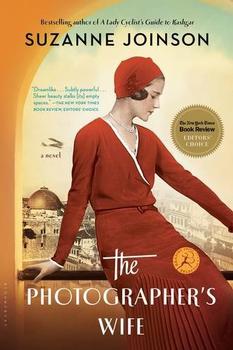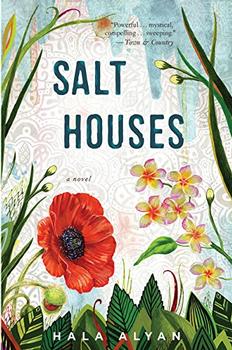Summary | Excerpt | Reading Guide | Reviews | Beyond the book | Read-Alikes | Genres & Themes | Author Bio

This is the story of Prudence (or Prue). As a young girl of 11 in 1920, Prue lived in Jerusalem with her British architect father Charles Ashton. While he planned to make changes to the city, he also wanted to take aerial photographs of the area under British Mandate. He enlisted William Harrington to fly the plane, and Eleanora Rasul to take the photographs. Eleanor was the wife of the Arab photographer Khaled Rasul, but was an emminent photographer in her own right. What Prue saw and heard, but her father did not, was that Harrington was in love with Eleanora. What's more, her father's plans for Jerusalem could cause even more uproar among the Arab residents of the city than the Balfour Declaration's call for a Jewish homeland in Palestine has already caused.
Seventeen years later, Prue is living in a tiny shack in Shoreham, England as a sculptor, with her six-year-old son Skip. When Harrington shows up on her doorstep, Prue's past and the impending war in Europe come together on a collision course of deception and betrayal.
The first thing you'll notice about this novel is its absolutely stunning prose. Joinson moves between poetic phrases and dreamlike interludes that create a chilly atmosphere throughout the book, from the snows in Jerusalem to the crash of the sea on England's southern coastline. This spills over to her dialogue as well – her characters never giving too much away, and holding each other at a distance, while suggesting the undercurrent of their conversations. Joinson also uses the same poetic style to interject flashbacks into the present action of the narrative as thoughtful snippets. These happen particularly during times when the characters are experiencing something unpleasant. What we end up with is a type of collage of images that dress the plot with different types of textures and fabrics; rich language puts things in light or shadow as the situations warrant them. This compelling aspect of the novel is probably the main reason I couldn't stop reading it.
Joinson also does something interesting with this book: she changes the point of view when she changes time periods. All of the narrative about 1920 Jerusalem is in third person, however, Prue's first person voice narrates almost all of the sections where she is an adult. While this mixing of points of view struck me as being interesting, and an excellent way to help the reader differentiate between the eras, it was also a bit disconcerting. Third person is a less intimate voice than first, and because most of the action takes place in 1920, it was as if Joinson was trying to distance the reader emotionally from these sections. But these are actually the most poignant parts of the book. Of course, this might have been her intention – using third person for the 1920 section keeps the reader from feeling overly connected to Prue, while using first person in the more modern sections of the story helps the reader feel closer to older Prue, despite her being less a sympathetic character at that time of her life.
The other problem I had was that once the story finishes going back to 1920, the titular character Eleanora fades into the distance, and the focus shifts to other things motivating the actions of the remaining characters. This has to do with Harrington seeking out Prue, in order to get hold of the specific photographs that Eleanora's husband took in 1920, which he entrusted to Prue's care. In addition, many of the political details were confusing, even for me - someone who lives in Jerusalem, and knows some of the history of British Mandate Palestine.
Despite all this, Joinson's luscious writing style and the literary parallels and counterpoints she uses shine. For example, several times in the book, Joinson talks about the architecture of nature and the human form. This is something that Eleanora attempts to capture in her photographs, which becomes a connection between Eleanora and Prue's father, and through them, with Prue. This also separates them, as Ashton is only concerned with the physical reality, while Eleanora attempts to interpret what is real through her pictures. Another example is how Joinson has Khaled entrust photographs documenting the cruelty against the Arabs by the British with Prue, who is only a child, thereby leaving proof of guilt with one who is innocent. This certainly makes up for the other issues I had with the novel. All in all, I believe The Photographer's Wife is worthy of much praise.
![]() This review
first ran in the March 2, 2016
issue of BookBrowse Recommends.
This review
first ran in the March 2, 2016
issue of BookBrowse Recommends.

If you liked The Photographer's Wife, try these:

by Hala Alyan
Published 2018
From a dazzling new literary voice, a debut novel about a Palestinian family caught between present and past, between displacement and home.

by Aline Ohanesian
Published 2016
Moving between the last years of the Ottoman Empire and the 1990s, a story of passionate love, unspeakable horrors, incredible resilience, and the hidden stories that haunt a family.
Your guide toexceptional books
BookBrowse seeks out and recommends the best in contemporary fiction and nonfiction—books that not only engage and entertain but also deepen our understanding of ourselves and the world around us.